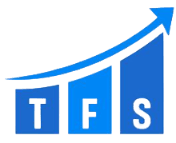Mastering Business Forecasting: Tools and Techniques for Arkansas Companies
Understanding Business Forecasting
Business forecasting is a crucial element for companies looking to thrive in today's competitive market. For Arkansas businesses, mastering forecasting techniques can mean the difference between growth and stagnation. By predicting future trends, companies can make informed decisions, allocate resources efficiently, and gain a competitive edge.

Why Forecasting Matters
Forecasting provides businesses with a roadmap for the future. It allows companies to anticipate changes in the market, prepare for potential challenges, and seize emerging opportunities. In Arkansas, industries such as agriculture, manufacturing, and technology can benefit significantly from accurate forecasting methods.
Essential Tools for Effective Forecasting
There is a wide array of tools available to aid businesses in forecasting. Leveraging the right tools can enhance accuracy and reliability in predictions. Popular tools include:
- Microsoft Excel: A versatile tool that offers various statistical functions and data visualization capabilities.
- Tableau: Known for its robust data visualization features, it helps in understanding complex data sets.
- SAP Analytics Cloud: Provides advanced analytics and business intelligence solutions.
Adopting Technological Solutions
With advancements in technology, businesses now have access to sophisticated forecasting models. Machine learning and artificial intelligence have revolutionized the way forecasts are made, offering predictive analytics that can process vast amounts of data quickly and accurately.

Techniques for Accurate Forecasting
While tools are essential, understanding and applying the right techniques is equally important. Some popular forecasting techniques include:
- Time Series Analysis: Useful for predicting future values based on previously observed values.
- Causal Models: These models look at cause-and-effect relationships to predict future outcomes.
- Qualitative Forecasting: Involves expert judgment and market research, particularly useful when historical data is limited.
Integrating Market Dynamics
Arkansas companies need to integrate local market dynamics into their forecasting models. Understanding regional economic conditions, consumer behavior, and industry-specific trends can offer more precise predictions. This localized approach ensures that forecasts are not only accurate but also relevant.

The Role of Collaboration in Forecasting
Collaboration is key to refining forecasting processes. By fostering an environment where teams share insights and analyses, businesses can improve the accuracy of their forecasts. Cross-departmental collaboration ensures that forecasts consider diverse perspectives, leading to well-rounded decisions.
Continuous Improvement and Learning
The business landscape is ever-changing, making continuous improvement a necessity for effective forecasting. Arkansas companies should invest in training programs and workshops to keep their teams updated on the latest forecasting methods and technologies. Regularly reviewing and refining techniques will ensure ongoing success.
In conclusion, mastering business forecasting involves a combination of using the right tools, applying effective techniques, and fostering a culture of collaboration and continuous learning. By doing so, Arkansas companies can stay ahead of the curve and secure their place in the future market.
